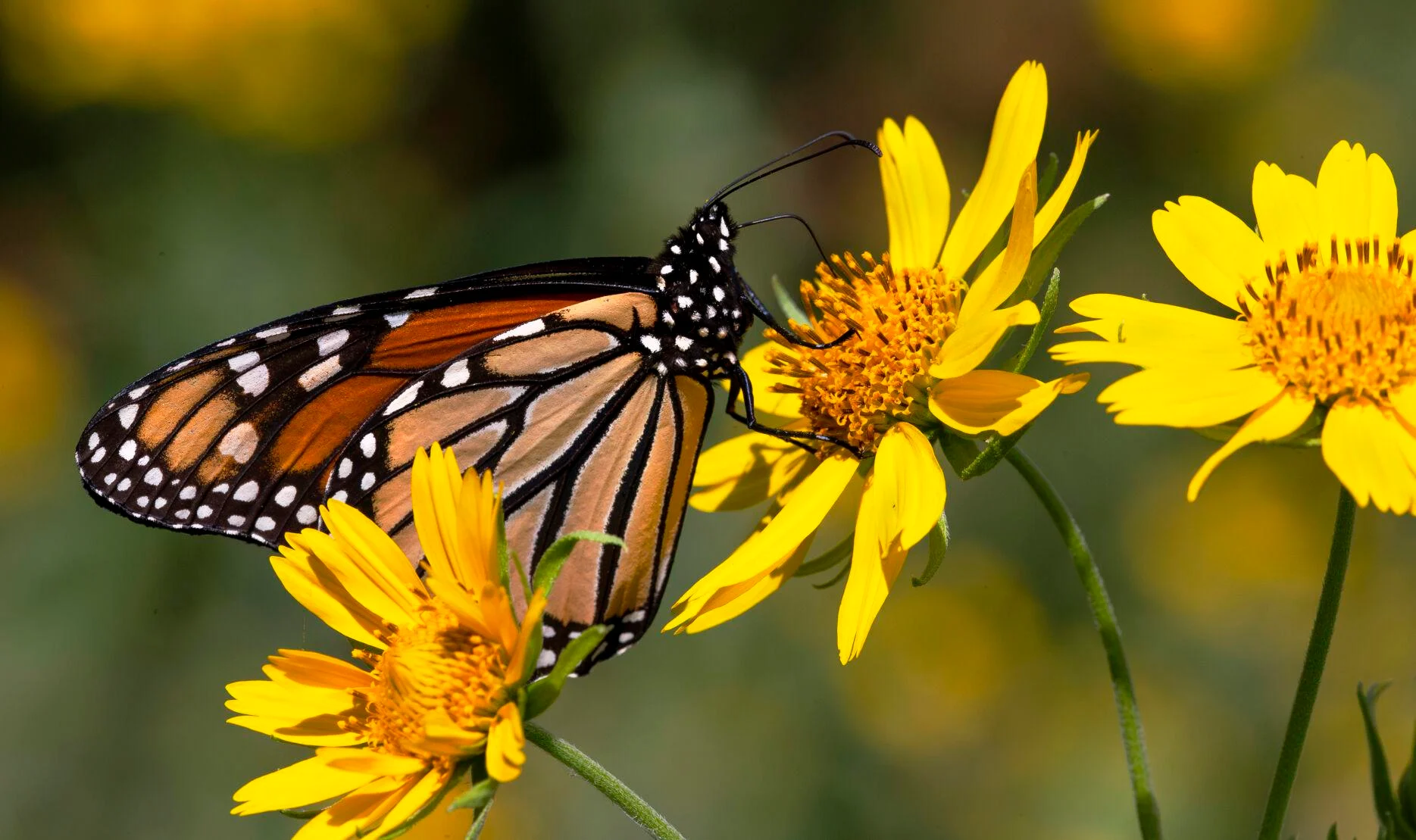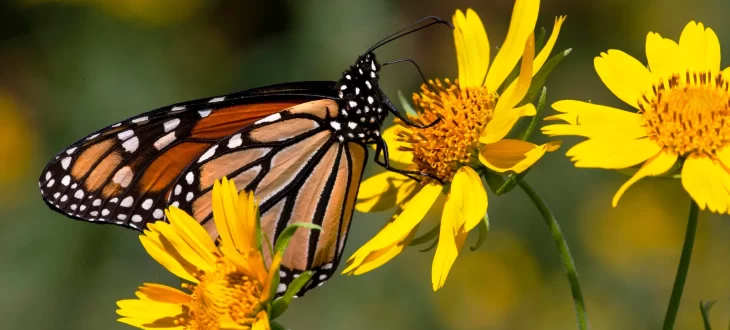Oklahoma Celebrates, Strategizes for Monarchs and Pollinators
September 6, 2024

By KELLY BOSTIAN
Every weekend through the first of October marks a community pollinator celebration, illustrating the growing interest, especially in monarch butterflies, as private, municipal, state, and tribal entities continue efforts to keep the migration of the imperiled iconic insects alive.
All eyes are on the fall migration of the eastern monarch after last year’s overwintering population navigated extreme drought conditions and posted the second-lowest measure of occupied winter habitat in 30 years of monitoring. A decision from the U.S. Fish and Wildlife Service on listing the butterflies as threatened or endangered is due in December.
Recognition that Oklahoma occupies a key swath of territory for spring and fall migrations led to the creation of the Oklahoma Monarch and Pollinator Collaborative in 2016. Leaders of that effort met again for two days in late August to create a second five-year plan coordinated through the new non-profit Oklahoma Monarch Society.
Katie Hawk, Monarch Society executive director, said working groups resulting from the two-day Oklahoma Monarch Summit held Aug. 21-22 at the Oklahoma City Zoo will meet in weeks to come as they create the updated plan, expected to be complete by early 2025.
“Essentially, it gives us a new, updated roadmap for stakeholders to work together toward our goals with specific action items,” she said.
More than 100 Summit participants included agency representatives from state, federal, and tribal governments, farmers and ranchers, landscapers and developers, municipalities, the Oklahoma and Tulsa zoos, several state universities, conservation education and communication specialists, and the Oklahoma Ecology Project.
Groups tackled everything from prescribed burning and rangeland management to right-of-way mowing, urban landscaping, and public education and outreach programs. Hawk said the main goals could be lumped into a general theme of “increasing habitat and reducing harm.”
“Essentially, we are trying to save the monarchs,” she said.
Kirsten Baum, director of Monarch Watch and senior scientist at the Kansas Biological Survey & Center for Ecological Research, detailed the monarch population status. Baum said the 2023-2024 overwintering group measured just .9 hectares or roughly 2.2 acres.
That compares to the all-time low of .67 hectares in 2013-2014. The population recovered to a high of just over 6 hectares in 2018-2019, a standout year among a decade that primarily measured returns at just under 3 hectares. Baum said recent studies indicate each hectare can hold up to 21.1 million monarchs.
Baum said this year’s habitat and weather conditions appeared mostly favorable for each monarch generation. The monarchs reproduce, and each generation pushes farther north each summer, some as far as the southern Canadian provinces.
Cool August weather in northern states may have slowed the initial return migration. Still, some early migrants of unknown origin typically reach Oklahoma in mid-August and early September and reproduce. Their offspring emerge just in time to catch the bulk of the migration, which passes through the region in early October.
After last year’s drought results, interest was high among the group to promote the planting of late-blooming drought-resistant native plants like golden crownbeard daisy and goldenrod. Those plants, and others, will likely be a common topic among crowds attending monarch celebrations that include children's activities, educational programs and displays, native plant sales, and other activities by location.
Programs set for the month ahead include the following:
- Sept. 7: Oklahoma Garden Club 45th Wildflower Workshop “Party for Pollinators,”8:30 a.m. - 3 p.m., Northeastern State University, Broken Arrow Campus Administrative Services Building.
- Sept. 7-8: Monarch Experience, 10 a.m.-5 p.m., Tulsa Botanic Garden
- Sept 14: Monarch Butterfly Day, 10 a.m. - 5 p.m. Chickasaw Cultural Center, Sulphur
- Sept 21 - Monarchs on the Mountain, 9 a.m. - 1 p.m., Chandler Park, Tulsa
- Sept 28 - Oklahoma Native Plant Network Plant Sale, 9 a.m. - 4 p.m., OSU Extension Center, Oklahoma City
- Oct. 5: Monarchs in the Park, 10 a.m. – 4 p.m. Andrews Park, Norman
- Oct. 5: Monarch Migration Celebration, 10 a.m.- 2 p.m. Martin Park Nature Center, Oklahoma City
Find more workshops and events on the Okies for Monarchs website events calendar.
The Oklahoma Ecology Project is a nonprofit dedicated to in-depth reporting on Oklahoma’s conservation and environmental issues. Learn more at okecology.org

